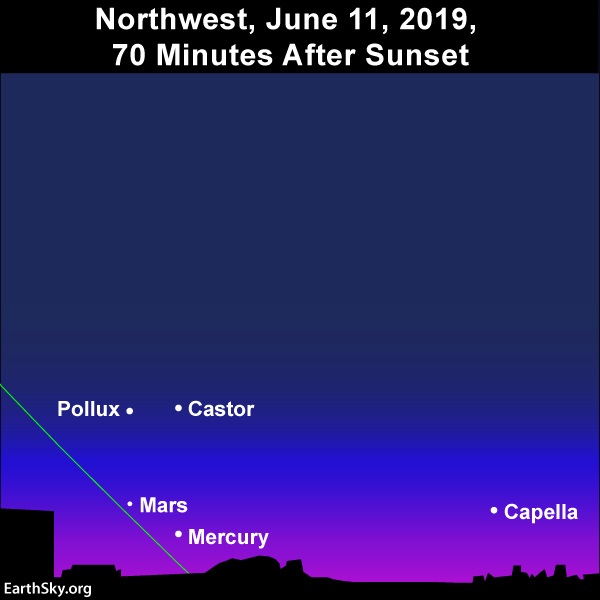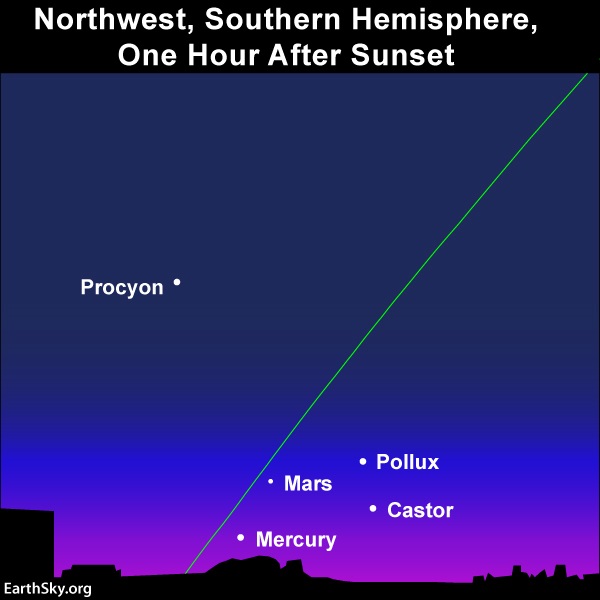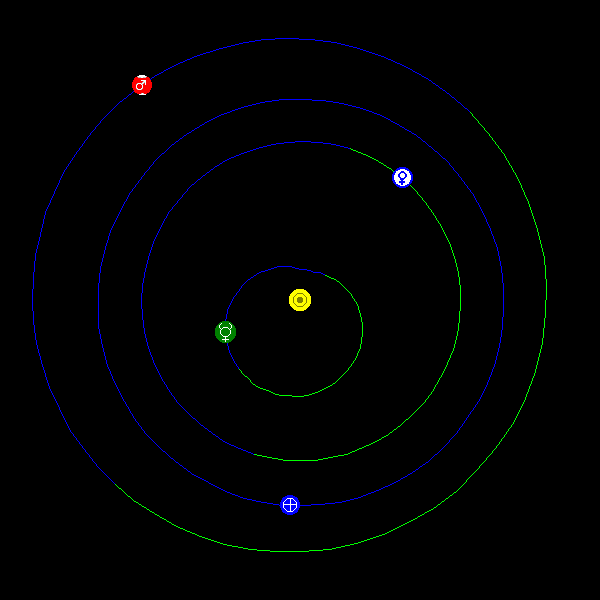
Remember Mars at its wonderful opposition in our sky last summer? It was fiery red, and brighter than Jupiter, as Earth passed between Mars and the sun in late July 2018. Since then, as Earth has raced ahead of Mars in orbit, the red planet has slowly dimmed in our sky. Soon, Mars will lag so far behind us that we’ll see it pass behind the sun. Mars is now low in the west after sunset, a moderately bright remnant of its blazingly bright self in 2018. This month, though, Mars and a second bright planet – Mercury – are doing something exciting, so that Mars is going out with a bang! Mars and Mercury will have the closest conjunction of two planets this year on June 18, 2019. Watch for them close together in the west after sunset. They’ll be closest around June 17, 18 and 19.

Starting around June 12, Mercury and Mars should be close enough together on the sky’s dome to fit within a single binocular field. Mercury will pass a scant 0.2 degrees north of Mars on June 18. For reference, 0.2 or 1/5th degree spans less than a pencil width at arm’s length.
The charts below show the western evening sky on June 11, 2019, as viewed from mid-northern latitudes and temperate latitudes in the Southern Hemisphere.


Mercury is by far the brighter of these two worlds. If your sky conditions are poor, you might need binoculars to spot fainter Mars next to Mercury. On June 10, 2019, Mercury is over six times brighter than Mars. Thereafter, both Mercury and Mars dim throughout the month, yet Mercury dims much more rapidly than Mar does.
Click here for a sky almanac, giving you the setting times for the sun, Mercury and Mars in your sky.
The charts below show the positions of Mercury and Mars for mid-northern North America for June 16, 17 and 18, 2019. But no matter where you live worldwide, these two worlds will easily fit within a single binocular field. You may need binoculars to see Mars – or possibly both Mercury and Mars.



On their conjunction date – June 18, 2019 – Mercury outshines Mars by about four times; by the month’s end, Mercury shines twice as brilliantly as the red planet. Although these planets remain fairly close together on the sky’s dome till the month’s end, it’ll be easier to spot Mercury and Mars earlier in the month than later on.

At their conjunction date on June 18, 2019, Mercury and Mars reside on nearly the same line of sight, but are not truly close together in space. At that time, Mars, the fourth planet outward from the sun, resides some 2.8 times farther from Earth than does Mercury, the solar system’s innermost planet.
Bottom line: Be sure to circle June 17, 18 and 19, 2019, on your calendar because that’s when Mars and Mercury snuggle up especially close together on the sky’s dome.











